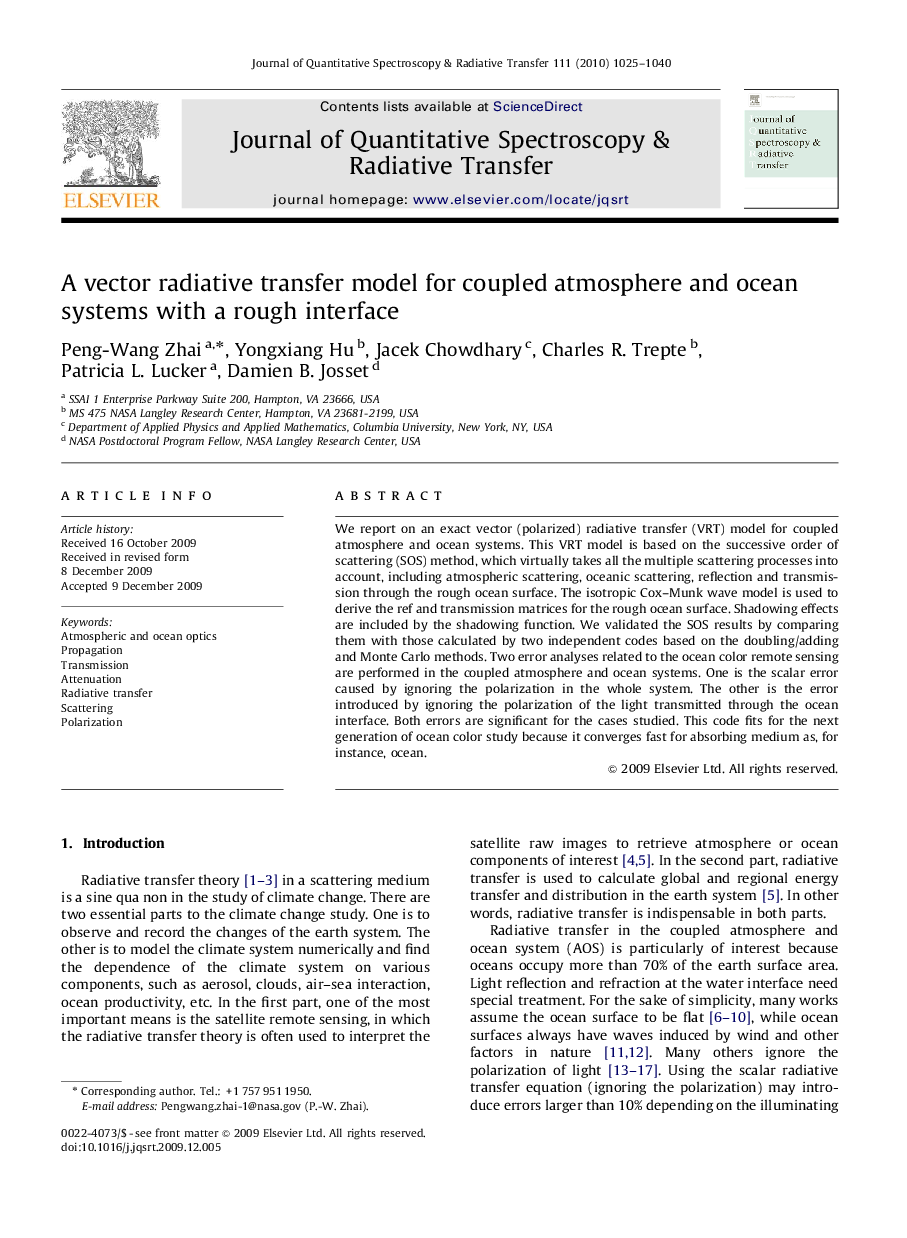| Article ID | Journal | Published Year | Pages | File Type |
|---|---|---|---|---|
| 5429974 | Journal of Quantitative Spectroscopy and Radiative Transfer | 2010 | 16 Pages |
We report on an exact vector (polarized) radiative transfer (VRT) model for coupled atmosphere and ocean systems. This VRT model is based on the successive order of scattering (SOS) method, which virtually takes all the multiple scattering processes into account, including atmospheric scattering, oceanic scattering, reflection and transmission through the rough ocean surface. The isotropic Cox-Munk wave model is used to derive the ref and transmission matrices for the rough ocean surface. Shadowing effects are included by the shadowing function. We validated the SOS results by comparing them with those calculated by two independent codes based on the doubling/adding and Monte Carlo methods. Two error analyses related to the ocean color remote sensing are performed in the coupled atmosphere and ocean systems. One is the scalar error caused by ignoring the polarization in the whole system. The other is the error introduced by ignoring the polarization of the light transmitted through the ocean interface. Both errors are significant for the cases studied. This code fits for the next generation of ocean color study because it converges fast for absorbing medium as, for instance, ocean.
